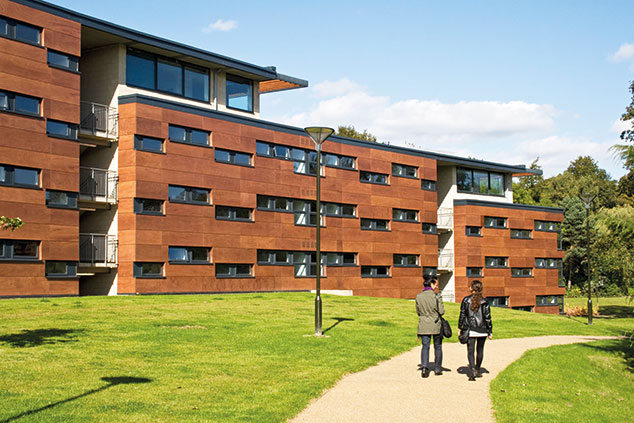
Type “invest in student accommodation” into Google and the search results seem compelling. Advertisements claim that in return for a relatively modest sum you can achieve guaranteed returns of anything from 7%-10% a year on a fully tenanted, fully managed buy-to-let investment. But investors should do their homework before parting with their money. Behind the glossy advertisements for purpose-built student accommodation lie high-risk, illiquid investments.
The student “pods” advertised to “savvy” investors are usually top-end, en-suite studios in buildings offering residents services such as high-speed broadband, gyms, cafes, and cycle storage. Buildings tend to be in city-centre locations with units appearing cheap compared with other properties in the same area. But the first problem investors might encounter if they want to buy one is that most mortgage lenders won’t lend on pods. “If a bank doesn’t think it’s a safe bet, then you should stay well clear,” says Robert Bence of the Property Hub forum. “The reason they won’t lend is that if they had to repossess a student pod they wouldn’t be able to sell it.”
Rental guarantees may sound reassuring, but they’re not
Assuming you can muster the cash to buy a student property outright, the rental guarantees offered by developers might sound reassuring – and lucrative: studentproperty.org offers returns of up to 10% fixed for up to five years; Urbane Brix advertises average annual yields of 9%; Sterling Woodrow mentions 10% assured income for three or more years. But if these yields sound too good to be true, it’s because they often are. Once the guaranteed period has expired, investors often find the real market rate for rents is much lower than they were initially told. In other cases the guaranteed rents and returns fail to materialise or last as long as they should.
“A quick bit of research will show you that many pods are advertised at a rent much higher than what the market dictates and that’s because the guaranteed rent is baked into the price you pay,” says Bence. Management charges are another factor to take into account. Unfortunately, managing agents of blocks of flats have a reputation for overcharging and under-delivering.
Assuming none of this puts you off and you buy a student unit, you could then run into problems if you want to sell later on. With a traditional buy-to-let property you can sell to the whole of the market. But your options are much more limited if you want to sell a student pod: you’ll need to find another cash-rich investor. The lack of exit options also affect pods’ prospects for capital growth.
Student property is high-performing, but only for some
If student units are such a risky investment, why is this type of accommodation often described as one of the best-performing asset classes? These claims often fail to mention that they’re talking about institutional investment, where pension funds and similar institutions buy whole blocks of units, or lease buildings from a university. They have a lot more control over their investment, enough capital to survive void periods or rent arrears, and an exit strategy that involves selling the block as a whole. The risks to individual investors buying single units are much higher. Especially keen investors might be better off researching the specialist trusts in the sector, such as Empiric Student Property (LSE: ESP), GCP Student Living (LSE: DIGS) or Unite Group (LSE: UTG).